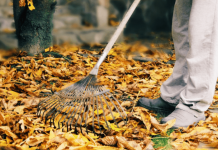Rose diseases
Roses have a reputation for suffering from all kinds of ailments. Modern roses are less prone to problems than tea roses, which have long been disliked, but seasonal roses are inevitably dealt with.
Most rose diseases are caused by wet or damp weather. There is nothing you can do to control the weather, but you can improve air circulation in your rose bush so that it dries out as quickly as possible. This will help prevent rose diseases to some extent, but not completely. Also, constant care of your rose bushes can solve the problem.
Most rose diseases are caused by carelessness and failure to follow the basic rules of care. Most pathological processes in plants are caused by fungi and bacteria. Thanks to modern preparations, they are easy to treat. In rare cases, viral diseases occur. With them, the situation is much worse. Since it is impossible to cure the queen of flowers from this severe ailment. All diseases of garden shrubs can be divided into infectious and non-infectious.
Powdery mildew

This disease is characterized by the appearance of a whitish plaque on the surface of leaves and shoots. It usually appears at temperatures below 18°C and high humidity. The initial stage of powdery mildew is characterized by small spots that grow over time and affect the entire flower, disrupting its metabolism.
Treatment. Roses are treated with nettle infusion or horsetail decoction or phytosporin.
False powdery mildew

“Sunspots”: Black spots are a very common fungus in wet weather, as this disease is transmitted through water. As the name implies, black spots appear on leaves and stems, eventually weakening the plant and causing leaf fall.
Treatment: Choose a variety with black spots and pay close attention to hygiene. Water only the roots of the rose, avoiding the leaves. Spray with water in the morning so the leaves have time to dry. If black spots appear annually, try spraying with sulfuric lime at the end of the season and try again in early summer. Once black spot appears, it is hard to stop. Spraying with neem oil and potassium bicarbonate has some effectiveness.
Gray rot
The disease is caused by the fungus Botrytis cinerea. The debut of the pathological process occurs in winter. Brownish depressions appear on rose stems, from which a gray and fluffy fungus then grows. Then black growths with spores form in its place. It is also possible for gray rot to appear in the summer due to heavy rainfall. If the rose is not treated for this disease, the plant is completely covered with a gray scum and rots.
Young roots of cuttings are also affected by gray rot. Foci of infection persist in plant debris. The fungus spores are then spread by insects and the wind. Therefore, unwanted neighbors for roses are, for example, garden strawberries, which are often affected by gray rot. The disease appears on roses in dense plantings or if the rose garden is watered late at night and in high humidity.
Treatment: To prevent root rot and make the soil healthier, put a tablet of gliocladin under each plant in May and try to repeat this treatment in August. Use pest control chemicals only if absolutely necessary.
Rust on the rose

Rust is easy to spot. Small orange lumps form on the underside of the leaves. This fungus can also cause abortion. When chestnuts are cold, the chance of rust increases.
It develops due to infection of the ground part of the plant with Phragmidium fungus. The disease of garden roses is manifested by the formation of yellow growths. Shoots begin to curl and crack.
Treatment: Treatment of rust is similar to that of black spot: maintain hygiene and spray against late blight after pruning. If an infestation occurs, remove all infested leaves and use neem oil to control it.
Rose mosaic virus

If your rose is infected with the rose mosaic virus, there is nothing you can do except go to a nursery for replacement. Rose mosaic virus manifests as yellow spots on the leaves and transforming neoplasms. It can be stunted growth or a mild infection.
The manifestation of mosaic virus in tea-hybrid roses is dwarfism of all vegetative organs. Leaf blades become deformed and twisted, and the leaf petiole becomes crooked. The veins become noticeably lighter.
Treatment: If several leaves are affected, the plant will continue to grow and small spots can swell. The really good news is that they will not spread to your other roses. To prevent transmission of the disease, treat all garden pruning tools with alcohol or a 1% solution of potassium permanganate.
If you follow the simple rules of care and feed it properly, you can avoid garden rose diseases. If you notice the first signs of a disease, take action immediately. This approach will not only quickly cure your flower, but it will also keep the entire garden from being infected with pathogens.
There are plenty of tips on how to avoid these diseases and other problems, so arm yourself with enough knowledge to ensure that your roses bloom on time and to their full potential.








